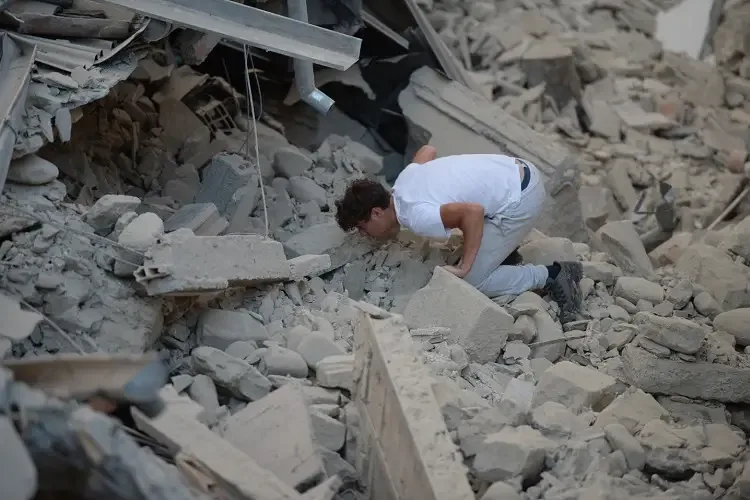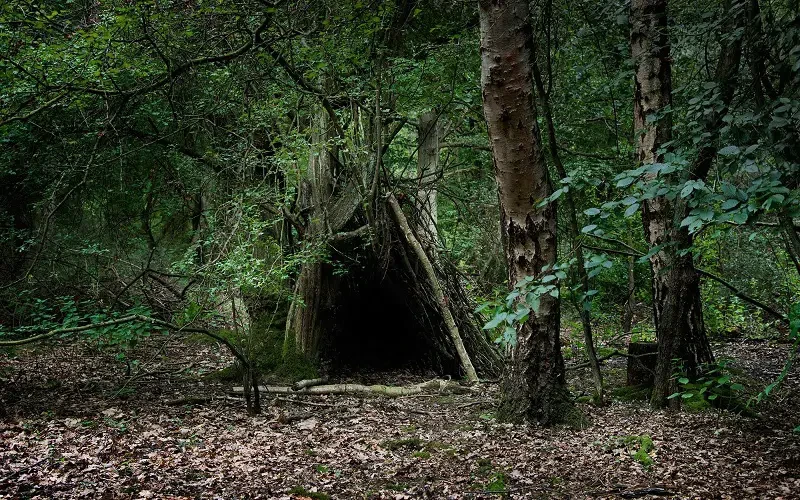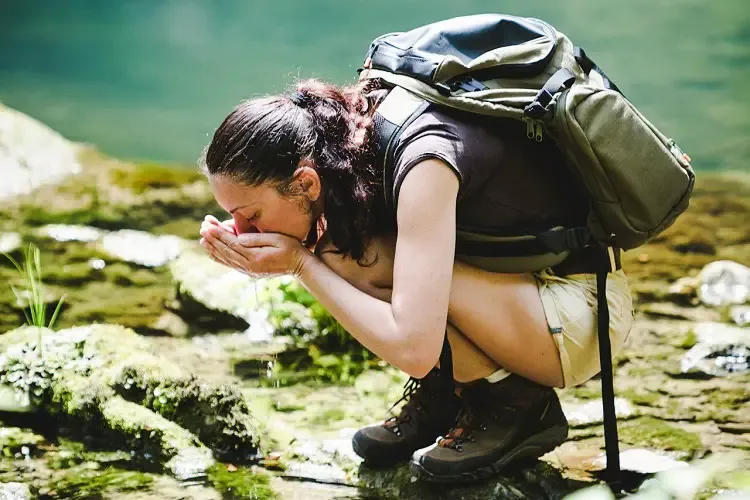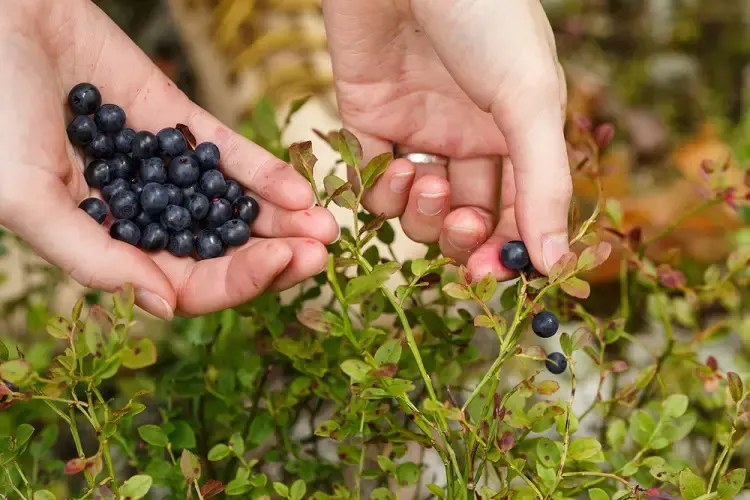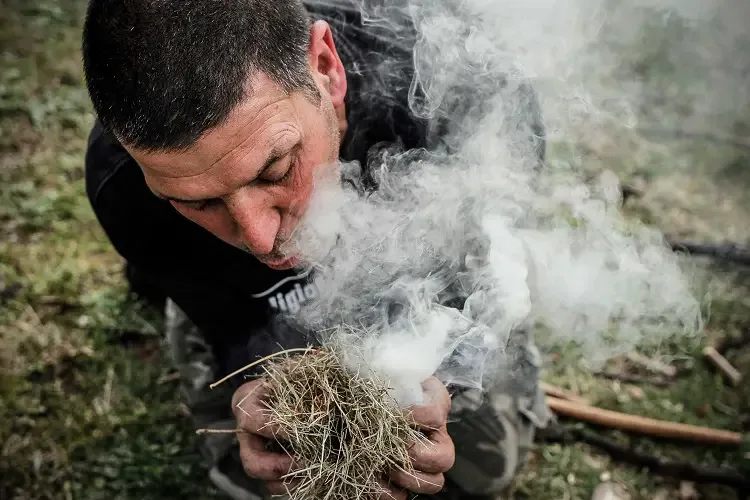SHTFDad may collect a share of sales or other compensation from the links on this page.
Surviving in a challenging environment is a complex task. It requires you to have a certain set of skills and knowledge.
You may be planning a camping trip. Or you may find yourself unexpectedly in the wilderness. In each case, knowing the basic rules of survival is important.
One of these rules is the “rule of three survival.” They provide a simple framework for prioritizing your needs in a survival situation.
The survival rule of 3 is a concept. It defines the order of priorities for survival in extreme situations. It states that a person can survive:
- 3 minutes without air.
- 3 hours without shelter (under extreme conditions).
- 3 days without water.
- 3 weeks without food.
These numbers are not accurate. They may vary depending on a person’s physical condition and the conditions in which they are.
Nevertheless, the survival rule of 3s provides a useful framework. You will be able to prioritize your actions in a survival situation.
Wilderness Survival Priorities
The priority is always air. Without it, we can’t survive more than a few minutes. Are you in a situation where you don’t have enough air?
There can be many reasons, such as after an earthquake or flood. You need to act quickly to find a source of air.
The second priority of the rule of three survival is shelter. In extreme conditions, exposure to the elements can be life-threatening.
The shelter can help protect you from harsh weather conditions such as rain, snow, or extreme heat. It can also serve as a place to rest and conserve energy.
The third priority is water. Think about it, how long can you live without water?
Dehydration can quickly become a serious problem, especially in hot and dry environments. Without water, our bodies cannot function properly. It can lead to heat exhaustion or heat stroke.
Finally, the fourth priority is food. It is necessary for long-term survival. But it is not as important as air, shelter, and water in the short term.
You can rank your actions by understanding and following the survival rule of 3. Then you can make the most of your resources in a survival situation.
Whether you are an avid hiker or a city dweller, this knowledge can be a life-saving tool in unexpected circumstances. Let’s take a closer look at each of these rules.
The Rule of Three Survival: Air
The first rule of survival rule of 3s is air. Without air, we can’t survive more than a few minutes. The average person can hold their breath for about 30 seconds to 3 minutes.
Have you found yourself in a situation where you are short of air? It could be, for example, trapped in a collapsed building or underwater.
You must act quickly and find a source of air. If a building collapses, cover your nose and mouth with a cloth to filter air as you move toward safety. If you are in the water, try to find an air pocket and breathe slowly. That way, you can conserve oxygen.
No air source in the vicinity? You may have to create one. This survival rule of 3 will help you. Are you trapped in a small, confined space?
Try to make a hole so that fresh air can flow into it. Remember that you must conserve as much oxygen as possible. Stay calm and move less. Remember, the key to surviving a shortness of air situation is this:
- Act quickly
- Stay calm
- Prioritize
The Survival Rule of 3s: Shelter
The second survival rule of 3 is shelter. In extreme conditions, exposure to the elements can be life-threatening. The shelter will help protect you from harsh weather conditions, such as:
- Heavy rain.
- Snow.
- Severe heat.
Are you in a situation where there is little or no shelter? In extreme conditions, a person can survive without shelter for about 3 hours.
Examples might be stranded in the desert or caught in a storm. Look for natural shelters such as:
- Caves
- Rock formations
- Fallen trees
You can also create a shelter out of improvised means. For example, you can use leaves or branches.
When building a shelter, always remember the rule of three survival. Your priority is protection from the elements. Use materials that will keep you dry and warm. Be sure to insulate yourself from the ground to avoid heat loss.
In addition to protecting yourself from the elements, it is also important to conserve your energy. Avoid unnecessary movement and stay as warm and dry as possible. If you have the means, build a fire. That way, you will stay warm and dry and signal for help.
The Survival Rule of 3s: Water
The third rule of three survival is water. The human body can survive without water for only a few days. It makes it a critical aspect of survival in extreme situations.
The average person can survive without water for about three days. It all depends on environmental factors such as temperature and physical activity.
Have you found yourself in a water shortage situation? For example, you are lost in the wilderness or stranded in the desert. It is very important to find a source of water.
Look for natural water sources like streams, lakes, and rivers. If you can’t find a natural source, try collecting dew or rainwater with a cloth or a container.
In addition to these survival rules 3, it is important to remember one more thing. Not all water sources are safe to drink.
Avoid drinking water from stagnant bodies of water. It may contain harmful bacteria or parasites. You can purify water by boiling it or using water purification tablets.
In addition to finding and purifying water, it is important to conserve your water supply. Avoid excessive sweating and try to stay in the shade to avoid dehydration.
The Survival Rule of 3: Food
The fourth rule is food. You already know how long you can live without water. But what about food? Of course, you need food for survival.
But this is the least important aspect. You can live without it for weeks. The average person can survive without food for about three weeks. It all depends on his physical condition and other factors.
Do you find yourself in a situation where you are short of food? For example, you are lost in the wilderness.
You need to find shelter, water, and air first. Only then can you think about food. But, if you can access food, it is important choosing high-calorie foods such as:
- Nuts.
- Seeds.
- Dried fruit.
Avoid unnecessary movement and stay warm and dry. Also, it is important to conserve your energy to look for food. If you find yourself in a situation where you have to move around to survive, you prefer food that is easy to get and does not need much energy to gather.
Remember, the key to surviving in a food shortage situation is to rank. Although food is important, it is the least critical aspect. It should not be the primary concern until you provide air, shelter, and water.
The Importance of Using Survival Rule of 3 in Survival Situations
Using the survival rule of 3s can make all the difference. They can help you stay alive. It is easy to become overwhelmed and make hasty decisions in high-pressure situations.
They can lead to further danger or harm. The rules of three survival provide a clear and concise framework for prioritizing actions and making decisions.
By following the rules, you can focus on your actions. You can conserve your energy, which is necessary for survival. Rules also give you a sense of structure and direction. It can help reduce panic and anxiety in stressful situations.
Besides, rules can be useful for communicating and coordinating with others in a survival situation.
People can work together by having a common understanding of rules and priorities. That way, you can increase your chances of survival.
In general, using rules in survival situations can help rank, conserve energy, reduce panic and anxiety, and make communicating and coordinating with others easier.
Frequently Asked Questions
What are the main survival rules?
The three rules are air, shelter, and water. You need to find a source of each before you can focus on food.
What is the priority of seeking shelter or water?
The priority is shelter first, then water. Air is always a top priority and should be noticed.
Can I survive without food?
Yes, you can live without food for about three weeks. However, it depends on the person’s physical condition and other factors. Therefore, it is important to conserve your energy by avoiding unnecessary movement.
When should I focus on finding food?
Finding food should be the last priority after air, shelter, and water are handled. You can search for high-calorie foods such as nuts, seeds, and dried fruit.
How do I purify water?
You can purify the water by boiling it or using water purification tablets. It is important to purify water before drinking it. Contaminated water can cause serious illness.
Resources:


